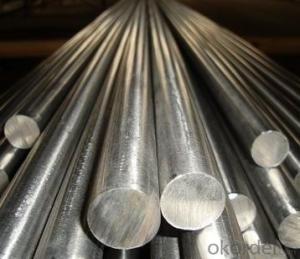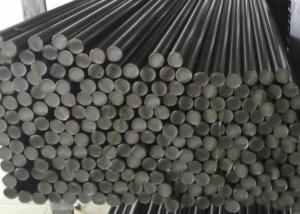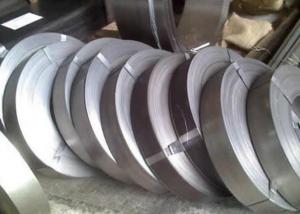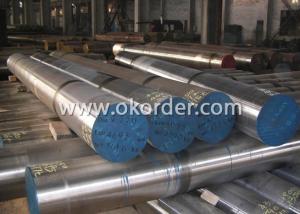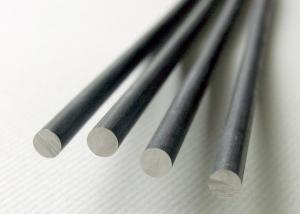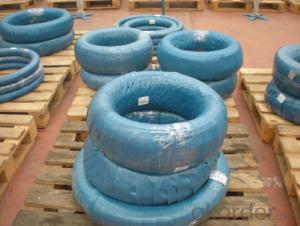Special Steel Alloy Steel Grade AISI H13
- Loading Port:
- China main port
- Payment Terms:
- TT OR LC
- Min Order Qty:
- 30 m.t.
- Supply Capability:
- 10000 m.t./month
OKorder Service Pledge
OKorder Financial Service
You Might Also Like
Item specifice
Specifications
H13 steel round bars
1.Diameter:10mm~600mm,
2.Delivery Conditon:annealed, black/turned surface
3.Short Delivery Time
Product information
| H13 steel round bars | |||||||
| Chemical Composition(%) | |||||||
| C | Si | Mn | P | S | Cr | Mo | V |
| 0.32-0.45 | 0.80-1.20 | 0.20-0.50 | ≤0.030 | ≤0.030 | 4.75-5.50 | 1.10-1.75 | 0.80-1.20 |
| Specialty | |||||||
| Harden and air cooling steel, 600`C work, high rigidity, high endurance, anti-heating, anti-cracking, electric sediment and middle-melting steel, compact structure, refined in electric cooker, quality of steel is pure, owned good character of equal direction. | |||||||
| Use | |||||||
| 1. Extrusion mold of aluminum and magnesium, die-casting mold, especially adapt to the mold in large and complicated form. | |||||||
| 2. Extrusion mold of copper alloy, die-casting mold | |||||||
| 3. Hot pressing machine mold | |||||||
| Heat Treatment | |||||||
| 1. Quench:1000-1040`C via 600`C and 850`C, preheating oil or wind cooling | |||||||
| 2. Temper temperature and rigidity HBC(reference): | |||||||
| quench hardening 108-300 °c 450-500 °c 550-5700°c | |||||||
| 53-55 51-52 53-54 50-52 | |||||||
| 3. Temper temperature should be higher than working temperature in order to stabilize the working size of mold | |||||||
| 4. Heat up to 650 °c of average temperature in order to eliminate the machined stress, 500 °c air cooling after electric cooker cooling | |||||||
| 5. Tempering, 800-850 °c ,slow cooling after diathermia | |||||||
| Melting Process | |||||||
| 1. EAF: Electric Furnace+LF+VD(Optional) | |||||||
| 2. ESR: Electric Furnace+LF+VD+Eleroslag Remelted(Optional) | |||||||
| UT Class | |||||||
| According to Standard of SEP 1921/84,100% Volume, Level C/c, D/d or E/e | |||||||
| Tolerance on Quantity | |||||||
| +/-10% Per Size | |||||||
Product show

Workshop show
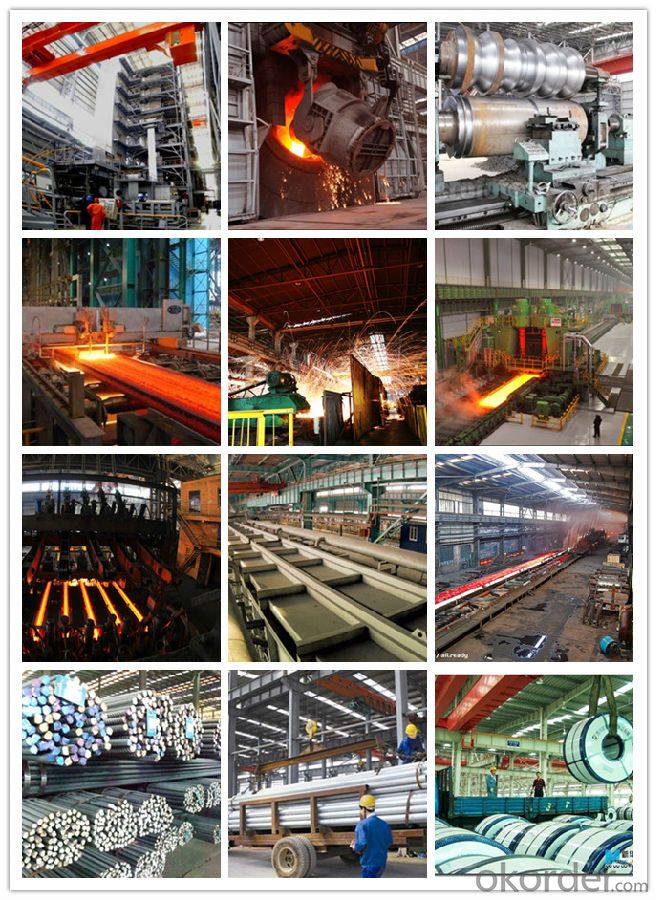
Shipping
1. FedEx/DHL/UPS/TNT for samples, Door-to-Door;
2. By Air or by Sea for batch goods, for FCL; Airport/ Port receiving;
3. Customers specifying freight forwarders or negotiable shipping methods!
Delivery Time: 3-7 days for samples; 5-25 days for batch goods.
Payment Terms
1.Payment: T/T, L/C, Western Union, MoneyGram,PayPal; 30% deposits; 70% balance before delivery.
2.MOQ: 1pcs
3.Warranty : 3 years
4.Package Informations: 1) EXPORT, In 20 feet (GW 25 ton) or 40 feet Container (GW 25 ton)
2)as customer's requirement
Why choose us?
(1) The leading exporter in China special steel industry.
(2) Large stocks for various sizes, fast delivery date.
(3) Good business relationship with China famous factories.
(4) More than 7 years steel exporting experience.
(5) Good after-sales service guarantee.
- Q:How does special steel contribute to the automotive industry?
- Special steel plays a crucial role in the automotive industry by providing high strength, durability, and corrosion resistance properties, which are essential for various automotive components. This type of steel is used in manufacturing critical components such as engine parts, chassis, suspension systems, and safety features like airbags and seatbelt mechanisms. It not only improves the overall performance and safety of vehicles but also helps in reducing weight, enhancing fuel efficiency, and meeting stringent emission standards.
- Q:Does special steel require special machining techniques?
- Yes, special steel does require special machining techniques. Special steel, also known as tool steel or high-performance steel, has unique properties such as high hardness, wear resistance, and toughness. These properties make it more challenging to machine compared to regular or mild steel. Special machining techniques such as high-speed machining, cutting tool selection, and cooling methods are often required to achieve precise and efficient machining results with special steel.
- Q:What are the different methods for improving the corrosion resistance of stainless special steel?
- There are several methods for improving the corrosion resistance of stainless special steel. Some of the common methods include alloying the steel with elements such as chromium, nickel, and molybdenum, which enhance its resistance to corrosion. Another method is passivation, which involves treating the steel with an acid solution to remove any surface contaminants and create a protective oxide layer. Coating the steel with materials like paint, powder coating, or electroplating can also improve its corrosion resistance. Additionally, proper cleaning and maintenance practices, such as regular removal of dirt and debris, can help prevent corrosion and maintain the steel's resistance over time.
- Q:What properties make special steel unique?
- Special steel, also referred to as alloy steel, possesses distinct characteristics that differentiate it from other forms of steel. Firstly, special steel stands out due to its remarkable strength and hardness. It is specifically designed to resist deformation, making it ideal for applications that demand robust materials. Whether in the construction, automotive, or aerospace sectors, special steel provides the necessary durability and reliability. Another noteworthy attribute of special steel is its exceptional ability to resist corrosion. By incorporating certain alloying elements like chromium, nickel, or molybdenum, this type of steel becomes highly resistant to rust and other forms of corrosion. Consequently, special steel finds extensive use in marine environments, chemical plants, and oil and gas industries where exposure to harsh conditions is prevalent. Moreover, special steel displays excellent heat resistance. It can endure high temperatures without compromising its strength or structure, rendering it suitable for use in extreme heat environments such as power generation or furnace components. This property allows special steel to be employed in critical situations where other materials may fail or deteriorate. Special steel is renowned for its versatility and adaptability as well. Through the incorporation of various alloying elements and heat treatment processes, it can be customized to meet the specific requirements of different industries. This flexibility enables the creation of specialized alloys with unique properties, such as enhanced machinability, wear resistance, or improved magnetic properties, catering to a wide range of applications. In conclusion, the exceptional strength and hardness, superior corrosion resistance, excellent heat resistance, and adaptability of special steel make it an invaluable material in numerous industries. It enables the development of innovative and reliable products that meet specific industry needs.
- Q:What are the common challenges in welding titanium alloys?
- Welding titanium alloys presents various difficulties due to the unique properties of titanium. Firstly, the melting point of titanium is exceptionally high, reaching approximately 1668°C (3034°F). This necessitates the use of specialized equipment and techniques to attain optimal welding conditions. Moreover, this high melting point increases the risk of overheating, which can lead to distortion or warping of the welded components. Another challenge lies in titanium's strong reactivity with oxygen, nitrogen, and hydrogen. These gases can easily contaminate the weld pool during the welding process, resulting in the formation of brittle and porous welds. Therefore, it is essential to take rigorous measures such as utilizing inert shielding gases like argon or helium, maintaining a high level of cleanliness, and employing proper welding techniques like gas tungsten arc welding (GTAW) to minimize contamination and achieve sound welds. Titanium also exhibits a significant affinity for carbon, which can cause the formation of brittle intermetallic compounds during welding. To prevent this, it is crucial to employ low-carbon filler metals and ensure appropriate heat input to avoid carbon diffusion into the weld zone. Furthermore, titanium alloys possess low thermal conductivity, causing heat generated during welding to concentrate in a small area. This concentration leads to localized overheating and potential damage. Hence, it is vital to control heat input and utilize suitable welding techniques to distribute heat evenly, thereby avoiding overheating and preserving the integrity of the welded joint. Lastly, titanium alloys display a high coefficient of thermal expansion, resulting in significant thermal expansion and contraction throughout the welding process. This can lead to distortion and residual stresses in the welded components. To mitigate these issues, preheating and post-weld heat treatment may be required to minimize distortion and relieve residual stresses. In conclusion, the challenges in welding titanium alloys encompass a high melting point, reactivity with gases, potential contamination, formation of intermetallic compounds, low thermal conductivity, and significant thermal expansion. By comprehending these challenges and implementing suitable welding techniques, it is possible to overcome these difficulties and achieve high-quality welds in titanium alloys.
- Q:What are the different methods for controlling the grain size in special steel?
- There are several methods for controlling the grain size in special steel. 1. Heat treatment: One common method is heat treatment, which involves subjecting the steel to specific temperatures and cooling rates. This process can be used to refine the grain size by controlling the rate of nucleation and growth of new grains. For example, slow cooling can promote the formation of larger grains, while rapid cooling can result in smaller grain sizes. 2. Alloying elements: Adding certain alloying elements to the steel can also influence the grain size. For instance, elements like vanadium, niobium, and titanium can form carbides, which act as nucleation sites, leading to finer grain sizes. On the other hand, elements like aluminum and silicon can promote the formation of larger grains. 3. Mechanical deformation: Applying mechanical deformation to the steel, such as through rolling or forging, can also affect the grain size. These processes cause grain refinement by breaking up larger grains into smaller ones. Additionally, severe plastic deformation techniques like equal-channel angular pressing can produce ultrafine grains in special steel. 4. Grain growth inhibitors: Certain elements can act as grain growth inhibitors, preventing the coarsening of grain size during heat treatment. Examples of such elements include boron and zirconium. By controlling the concentration of these inhibitors, it is possible to inhibit grain growth and maintain a desired grain size. 5. Controlled cooling: Controlling the cooling rate during solidification and heat treatment is another method for controlling grain size. By carefully controlling the cooling rate, it is possible to achieve a specific grain size or a desired distribution of grain sizes. It is important to note that the choice of method for controlling grain size in special steel depends on the specific application and desired properties of the steel. Different methods may be employed in combination to achieve the desired grain size and optimize the performance of the steel for its intended use.
- Q:What are the different methods of non-destructive testing for special steel?
- There are several methods of non-destructive testing (NDT) for special steel, including magnetic particle testing, ultrasonic testing, radiographic testing, eddy current testing, and liquid penetrant testing. These techniques allow for the detection of defects or abnormalities in the material without causing any damage to the steel. Each method has its own advantages and limitations, and the choice of method depends on the specific requirements and characteristics of the steel being tested.
- Q:What are the properties of high-temperature stainless steel?
- High-temperature stainless steel possesses excellent heat resistance, corrosion resistance, and mechanical strength even at elevated temperatures. It retains its structural integrity and is capable of withstanding extreme thermal conditions, making it suitable for various high-temperature applications such as in aerospace, power generation, and chemical industries.
- Q:What are the different welding techniques for special steel?
- There are several different welding techniques that can be used for special steel, depending on the specific requirements and characteristics of the steel. Some of the commonly used welding techniques for special steel include: 1. Shielded Metal Arc Welding (SMAW): Also known as stick welding, SMAW uses a consumable electrode coated in flux to create an arc between the electrode and the base metal. This technique is versatile and can be used for a wide range of steel types, including special steel. 2. Gas Metal Arc Welding (GMAW): Also known as MIG (Metal Inert Gas) welding, GMAW uses a continuous solid wire electrode and a shielding gas to protect the weld from atmospheric contamination. This technique is commonly used for thinner special steel materials. 3. Flux-Cored Arc Welding (FCAW): Similar to GMAW, FCAW uses a continuous tubular electrode filled with flux. This flux provides additional shielding and can allow for higher deposition rates. FCAW is suitable for special steel with thick sections or when welding in outdoor or windy conditions. 4. Gas Tungsten Arc Welding (GTAW): Also known as TIG (Tungsten Inert Gas) welding, GTAW uses a non-consumable tungsten electrode and a shielding gas. This technique is known for its precision and is often used for special steel alloys that require high-quality and aesthetically pleasing welds. 5. Plasma Arc Welding (PAW): PAW is similar to GTAW but uses a more focused arc created by passing gas through a constricted nozzle. This technique is often used for special steel alloys that have higher melting temperatures or require deeper penetration. 6. Submerged Arc Welding (SAW): SAW involves feeding a continuous wire electrode into a molten flux layer that covers the weld. This technique is commonly used for heavy and thick special steel sections, as it provides excellent penetration and high deposition rates. It is important to choose the most appropriate welding technique for special steel based on factors such as the steel composition, thickness, intended application, and desired weld quality. Consulting with a qualified welding professional or referring to the steel manufacturer's recommendations can help ensure the best welding technique is selected for the specific special steel being used.
- Q:What are the main applications of special steel in the semiconductor industry?
- Special steel is widely used in the semiconductor industry for various applications. One of the main applications is in the production of wafer fabrication equipment, such as vacuum chambers, deposition tools, and etching systems. The high strength, corrosion resistance, and thermal stability of special steel make it suitable for these critical components that operate under extreme conditions. Additionally, it is also used in the manufacturing of precision molds and dies required for semiconductor packaging processes. Overall, special steel plays a vital role in ensuring the reliability, performance, and quality of semiconductor manufacturing processes.
1. Manufacturer Overview |
|
|---|---|
| Location | |
| Year Established | |
| Annual Output Value | |
| Main Markets | |
| Company Certifications | |
2. Manufacturer Certificates |
|
|---|---|
| a) Certification Name | |
| Range | |
| Reference | |
| Validity Period | |
3. Manufacturer Capability |
|
|---|---|
| a)Trade Capacity | |
| Nearest Port | |
| Export Percentage | |
| No.of Employees in Trade Department | |
| Language Spoken: | |
| b)Factory Information | |
| Factory Size: | |
| No. of Production Lines | |
| Contract Manufacturing | |
| Product Price Range | |
Send your message to us
Special Steel Alloy Steel Grade AISI H13
- Loading Port:
- China main port
- Payment Terms:
- TT OR LC
- Min Order Qty:
- 30 m.t.
- Supply Capability:
- 10000 m.t./month
OKorder Service Pledge
OKorder Financial Service
Similar products
New products
Hot products
Related keywords
